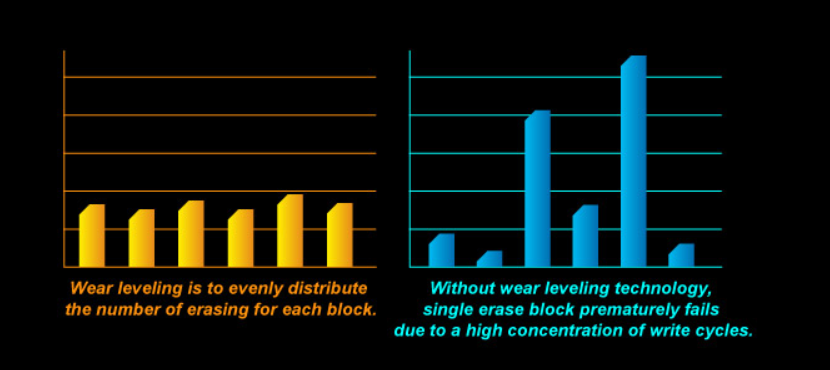The importance of SSD controllers often gets overlooked in the world of SSDs. Memory itself is front and center in the minds of most, simply because it is the most prominent component in any SSD. Most recently, we are even seeing Apple using the term ‘flash’ in its product literature , rather than ‘SSD’. Not only is the controller capable of providing lightning fast speeds and up to 256-bit encryption in today’s SSDs, but also, it extends the life of SSDs through wear leveling, garbage collection, and TRIM. To give you a small glimpse of how advanced the controller really is, it actually monitors each block of memory to ensure all wear equally. Now consider that a 256GB SSD contains 4.2 million of these blocks, each part of a constant ‘behind the scenes’ movement to ensure memory wears equally and prolongs the life of the SSD; it becomes quite an impressive feat.
Taking a closer look at controllers, Samsung was the first memory company to build its own SSD controller, enabling their building of a completely proprietary SSD. Most recently, the purchase of the Link-A-Media Devices by SK Hynix puts them side by side with Samsung as they now own the LAMD LM87800 controller that we first saw in Corsair Neutron SSDs. Considering that Corsair just released a Force Series SSD with a Phison SSD Controller, it might be a fair guess that, like Samsung, SK Hynix will be using their new LAMD controller solely for in-house SSD builds. OCZ’s purchase of Indilinx has brought them the Indy Barefoot controller which puts them miles ahead of other third-party manufacturers, however, they don’t own the fab.
Next up are LSI SandForce and Marvell which are by far the two most popular SSD Controller manufacturers who build specifically for third-party SSD positioning, LSI’s success shown with Intel while Marvell can take pride in having Crucial/Micron, SanDisk, and, most recently, Toshiba in their pockets. From there, we have Silicon Motion, Phison and JMicron SSD controllers available to third-party needs, although the list of controllers for specific needs can be extended to Memoright, SMART (now SanDisk), STEC (now Western Digital) and a few others at the enterprise level. Most recently, it appears that Toshiba may have taken a glance at OCZ consumer SSD division and it would only make sense that any of the remaining flash manufacturers, short of Samsung and SK Hynix, might always be on the lookout for their own proprietary controller.
SILICON MOTION SN2246EN SSD CONTROLLER
Silicon Motion first announced and displayed its SM2246EN controller at the 2013 Flash Memory Summit and their presence at the event was a strong show of confidence. The controller is a 4-channel SATA 3 design and capable of speeds over 540MB/s read and 410MB/s write with over 80,000K IOPS. It is AES 128/256 capable and conforms with the TCG Opal protocol. Compatibility not only extends to standard MLC and SLC variations, but also, it is also compatible with today’s most recent TLC designs.
PROTOTYPE
Silicon Motion shipped us a typical SSD PCB design containing the SM2246EN and eight modules of Toshiba 19nm 64GB Toggle mode MLC NAND flash memory. To give you an idea of the quality of this memory, we most recently published our report on the SanDisk SMART Storage Systems enterprise Cloudspeed 1000 SSD. Also contained on the PCB is a NANYA 256MB DDR3 DRAM cache.
Each memory module is 32GB in capacity for a total RAW capacity of 256GB, as there are four modules on each side of the PCB. When formatted, the total capacity available to the user is reduced to 236GB.
Crystal Disk Info provides some excellent information about the SSD itself to include its health, product information, ‘power on’ information as well as the characteristics of the SSD. We can see that the SSD is capable of TRIM as it is not grayed out as with AAM.
 The SSD Review The Worlds Dedicated SSD Education and Review Resource |
The SSD Review The Worlds Dedicated SSD Education and Review Resource | 


thanks, helpful review! The link to Amazon is not working though. Not really important for me, but was interested in the offers at Amazon. I’ll find out by searching overthere. Thanks.
Reading this after all these years… great little review, thank you!
Would have been even better if you had compared it to the other controllers on the market.
Otherwise, doesn’t give much context, and I had to skip to read your conclusion.